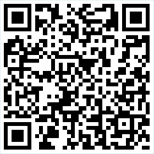Wonderful case
Site navigation
Copyright © Shenzhen Zaide Photoelectric Technology Development Co., Ltd
Support
Introduction to DDC and EDID information
1. Introduction: DDC is a bus standard for communication between the display and the host computer. Its full name is: DISPLAY DATA CHNNEL. Its basic function is to display the electronic file information of the display, such as the range of the field frequency, manufacturer, date of manufacture, product serial number, product model, standard display mode and its parameters, supported DDC standard categories, EDID Version information and more. The high version of the DDC standard bus also allows the host computer to directly adjust the basic parameters of the display, such as brightness, contrast, line size, line center position, color temperature parameters, and more.
2. DDC bus standard category:
1) DDC1: One-way transmission, CLOCKED BY VSYNC, only transmits 128 BYTE EDID standard data information.
2) DDC2B: One-way transmission (address: 0xA0/A1), is a simple standard I2C protocol for reading data information from memory, from the display to the host computer.
3) DDC2Bi: bidirectional transmission, I2C SLAVE MODE, transmitting graphic information (address: 0x6E/6F, 0x50/51), supporting simple ACCESS.BUS bus standard.
4) DDC2B+: Bidirectional transmission, point-to-point, does not support ACCESS.BUS, transmits EDID/VDIF standard data information (address: 0x6E/6F, 0x50/51).
5) DDC2AB: Two-way transmission, support ACCESS.BUS, transmit EDID/VDIF standard data information (address: 0x6E/6F, 0x50/51).
3. EDID data standard: EDID (Extended Display Identification Data Standard) is the standard data information that the display transmits to the host computer through DDC. It has been released to the third version, namely EDID Version 3, which has EDID Version 1.0, Revision 0, EDID Version respectively. 1, Revision 1, EDID Version 2, Revision 0, EDID Version 2, Revision 1 and other versions. According to the amount of data information, EDID is divided into 128 BYTE and 256 BYTE. In the future, there may be more data information in the new version of EDID.
EDID (Extended Display Identification Data Standard) is the standard data information that the display transmits to the host computer through the DDC. EDID is divided into 128 BYTE and 256 BYTE
EDID data format:
00–07: Header information
08–17: Complete serial number
08–09: Manufacturer ID
10–11: Product ID Code (little-endian)
12–15: Serial Number (little-endian)
16: Week of Manufacture
17: Year of Manufacture. Add 1990 to the value for actual year.
18: EDID Version Number
19: EDID Revision Number
20-24: Basic Display Parameters
20: VIDEO INPUT DEFINITION
bit 7: 0=analog, 1=digital
if bit 7 is digital:
bit 0: 1=DFP 1.x compatible
if bit 7 is analog:
bit 6-5: video level
00=0.7, 0.3, 01=0.714, 0.286, 10=1, .4 11=0.7, 0
bit 4: blank-to-black setup
bit 3: separate syncs
bit 2: composite sync
bit 1: sync on green bit 0: serration vsync
21: Maximum Horizontal Image Size (in centimeters).
22: Maximum Vertical Image Size (in centimetres).
23: Display Gamma. Divide by 100, then add 1 for actual value.
24: Power Management and Supported Feature(s):
bit 7: standby
bit 6: suspend
bit 5: active-off/low power
bit 4-3: display type. 00=monochrome, 01=RGB colour, 10=non RGB multicolour, 11=undefined
bit 2: standard colour space
bit 1: preferred timing mode
bit 0: default GTF supported
25-34: CHROMA INFO
25: low significant bits for Red X (bit 7-6), Red Y (bit 5-4), Green X (bit 3-2), Green Y (bit 1-0).
26: low significant bits for Blue X (bit 7-6), Blue Y (bit 5-4), White X (bit 3-2), White Y (bit 1-0).
27–34: high significant bits for Red X, Red Y, Green X, Green Y, Blue X, Blue Y, White X, White Y.
To decode actual value, rearrange bits as follows:
High significant bits 7-0 for (channel), low significant bits for (channel).
Actual value is between 0.000 and 0.999, but encoded value is between 000h and 3FFh.
35: ESTABLISHED TIMING I
bit 7-0: 720×400@70 Hz, 720×400@88 Hz,640×480@60 Hz, 640×480@67 Hz,
640×480@72 Hz, 640×480@75 Hz, 800×600@56 Hz, 800×600@60 Hz
36: ESTABLISHED TIMING II
bit 7-0: 800×600@72 Hz, 800×600@75 Hz, 832×624@75 Hz, 1024×768@87 Hz (Interlaced),
1024×768@60 Hz, 1024×768@70 Hz, 1024×768@75 Hz, 1280×1024@75 Hz
37: Manufacturer's Reserved Timing
38–53: Standard Timing Identification. 2 bytes for each record.
First byte
Horizontal resolution. Multiply by 8, then add 248 for actual value.
Second byte
bit 7-6: Aspect ratio. Actual vertical resolution depends on horizontal resolution.
00=16:10, 01=4:3, 10=5:4, 11=16:9
bit 5-0: Vertical frequency. Adds 60 to get actual value.
54–71: Desc riptor Block 1
54–55: Pixel Clock (in 10 kHz) or 0 If Pixel Clock is non null: 56: Horizontal Active (in pixels)
57: Horizontal Blanking (in pixels)
58: Horizontal Active high (4 upper bits) Horizontal Blanking high (4 lower bits) 59: Vertical Active (in pixels)
60: Vertical Blanking (in vertical pixels/lines)
61: high significant bits for Vertical Active (4 upper bits) high significant bits for Vertical Blanking (4 lower bits)
62: Horizontal Sync Offset (in pixels)
63: Horizontal Sync Pulse Width (in pixels)
64: Vertical Sync Offset (in lines) (4 upper bits) Vertical Sync Pulse Width (in lines) (4 lower bits)
65: high significant bits for Horizontal Sync Offset (bit 7-6)
high significant bits for Horizontal Sync Pulse Width (bit 5-4)
high significant bits for Vertical Sync Offset (bit 3-2)
high significant bits for Vertical Sync Pulse Width (bit 1-0)
66: Horizontal Image Size (in mm)
67: Vertical Image Size (in mm)
68: high significant bits for Horizontal Image Size (4 upper bits)
high significant bits for Vertical Image Size (4 lower bits)
69: Horizontal Border
70: Vertical Border
71: Interlaced or not (bit 7)
Stereo or not (bit 6-5) ("00" means not)
Separate Sync or not (bit 4-3)
Horizontal Sync positive or not (bit 2)
Vertical Sync positive or not (bit 1)
Stereo Mode (bit 0) (unused if 6-5 are 00)
If Pixel Clock is null:
56: 0
57: Block type FFh=Monitor Serial Number, FEh=ASCII string, FDh=Monitor Range Limits, FCh=Monitor name,
FBh=Colour Point Data, FAh, Standard Timing Data,
F9h=Currently undefined,
F8h=defined by manufacturer
58: Unknown
59–71: Desc riptor block contents. If block type is FFh, FEh, or FCh, the entire area is a text string.
If block type is FDh:
59–63: Min Vertical frequency, Max Vertical frequency,
Min Horizontal frequency (in kHz),
Max Horizontal frequency (in kHz), pixel clock (in MHz (multiply by 10 for actual value))
64–65: Secondary GTF toggle If encoded value is 000A, bytes
59-63 are used. If encoded value is 0200, bytes
67–71 are used.
66: Start horizontal frequency (in kHz).
Multiply by 2 for actual value.
67: C. Divide by 2 for actual value.
68-69: M (little endian).
70: K
71: J. Divide by 2 for actual value. If block type is FBh:
59: W Index 0. If set to 0, bytes
60-63 are not used. If set to 1,
61–63 are assigned to white point index #1
64: W Index 1. If set to 0, bytes
65-68 are not used. If set to 2,
65–68 are assigned to white point index #2 White point index structure:
First byte bit 3-2:
low significant bits for White X (bit 3-2),
White Y (bit 1-0) Second to third byte: high significant bits for White X, White Y.
Fourth byte: Gamma. Divide by 100, then add 1 for actual value.
To decode White X and White Y, see bytes
25-34. If block type is FAh:
59–70: Standard Timing Identification.
2 bytes for each record. For structure details, see bytes
38-53.
72–89: Desc riptor Block 2
90–107: Desc riptor Block 3
108–125: Desc riptor Block 4
126: Extension EDID Block(s).
In EDID 1.1, it is ignored, and should be set to 0.
127: Checksum.





